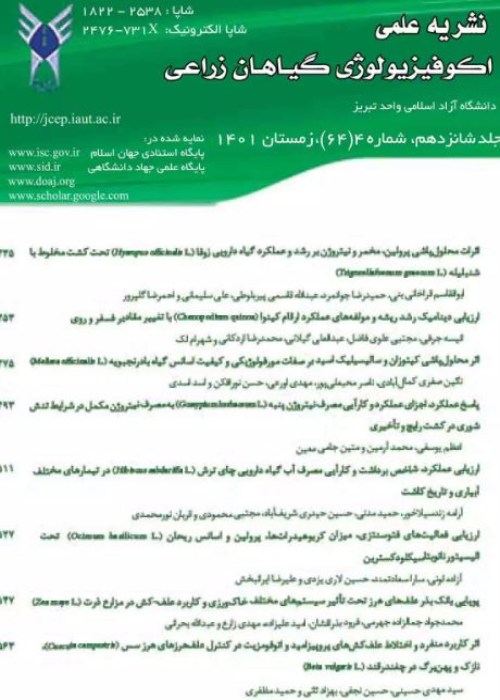The Effect of Heat Stress at the end of Season on Agronomic Characteristics and Yield of Rapeseed (Brassica napus L.) Genotypes in Ramhormoz
Author(s):
Article Type:
Research/Original Article (دارای رتبه معتبر)
Abstract:
Temperature during flowering and seed filling is a very important indicator for estimating the yield potential of rapeseed. In order to evaluate the effect of heat stress due to delay in sowing date on agronomic characteristics of different rapeseed genotypes (including, Hyola420, Hyola50, Hyola60, SAN37, SAN34 and Dalgan) two separate experiments on two Conventional sowing date (11th Nov.) and late sowing date (16th Dec.) each in the form of a randomized complete block design with three replications was carried out in the research farm of Islamic Azad University, Ramhormoz Branch, during the growing season of 2016 and 2017. Each sowing date was considered as an environment and the data were finally analyzed by combined analysis. The results showed that with delay in sowing date and the occurrence of heat stress at flowering and seed filling stages, the number of flowers on the main raceme, ratio of siliques produced per flowers produced, number of siliques per plant, and branches per plant, number of seeds per silique, 1000-seed weight, silique length, plant height and reproductive period decreased and led to significant reduction in seed yield. Reducing silique numbers per plant had the highest contribution to reducing seed yield. In conventional sowing date, seed yield in Hyola 420 and SAN 34 was higher than other genotypes. Under heat stress conditions due to delay in sowing, seed yield in Hyola50 followed by SAN34 was higher than other genotypes and Dalgan had the lowest seed yield. The lowest percentage of reduction seed yield was belonged to Hyola50 (55%) and the amount of stress susceptibility index in this genotype indicated that it was semi-tolerant to late season heat stress. In conventional sowing date, genotypes that quickly reached to the flowering stage but had a longer flowering period, had higher yields. In late sowing date, significant negative correlation was observed between the duration of flowering with number of siliques per plant, number of seeds per silique and seed yield. SAN 34 had high yield in both conventional and late sowing dates and is suggested as a suitable genotype for achieving stable yield in Ramhormoz region.
Keywords:
Language:
Persian
Published:
journal of crop ecophysiology, Volume:16 Issue: 63, 2022
Pages:
339 to 356
magiran.com/p2501863
دانلود و مطالعه متن این مقاله با یکی از روشهای زیر امکان پذیر است:
اشتراک شخصی
با عضویت و پرداخت آنلاین حق اشتراک یکساله به مبلغ 1,390,000ريال میتوانید 70 عنوان مطلب دانلود کنید!
اشتراک سازمانی
به کتابخانه دانشگاه یا محل کار خود پیشنهاد کنید تا اشتراک سازمانی این پایگاه را برای دسترسی نامحدود همه کاربران به متن مطالب تهیه نمایند!
توجه!
- حق عضویت دریافتی صرف حمایت از نشریات عضو و نگهداری، تکمیل و توسعه مگیران میشود.
- پرداخت حق اشتراک و دانلود مقالات اجازه بازنشر آن در سایر رسانههای چاپی و دیجیتال را به کاربر نمیدهد.
In order to view content subscription is required
Personal subscription
Subscribe magiran.com for 70 € euros via PayPal and download 70 articles during a year.
Organization subscription
Please contact us to subscribe your university or library for unlimited access!


